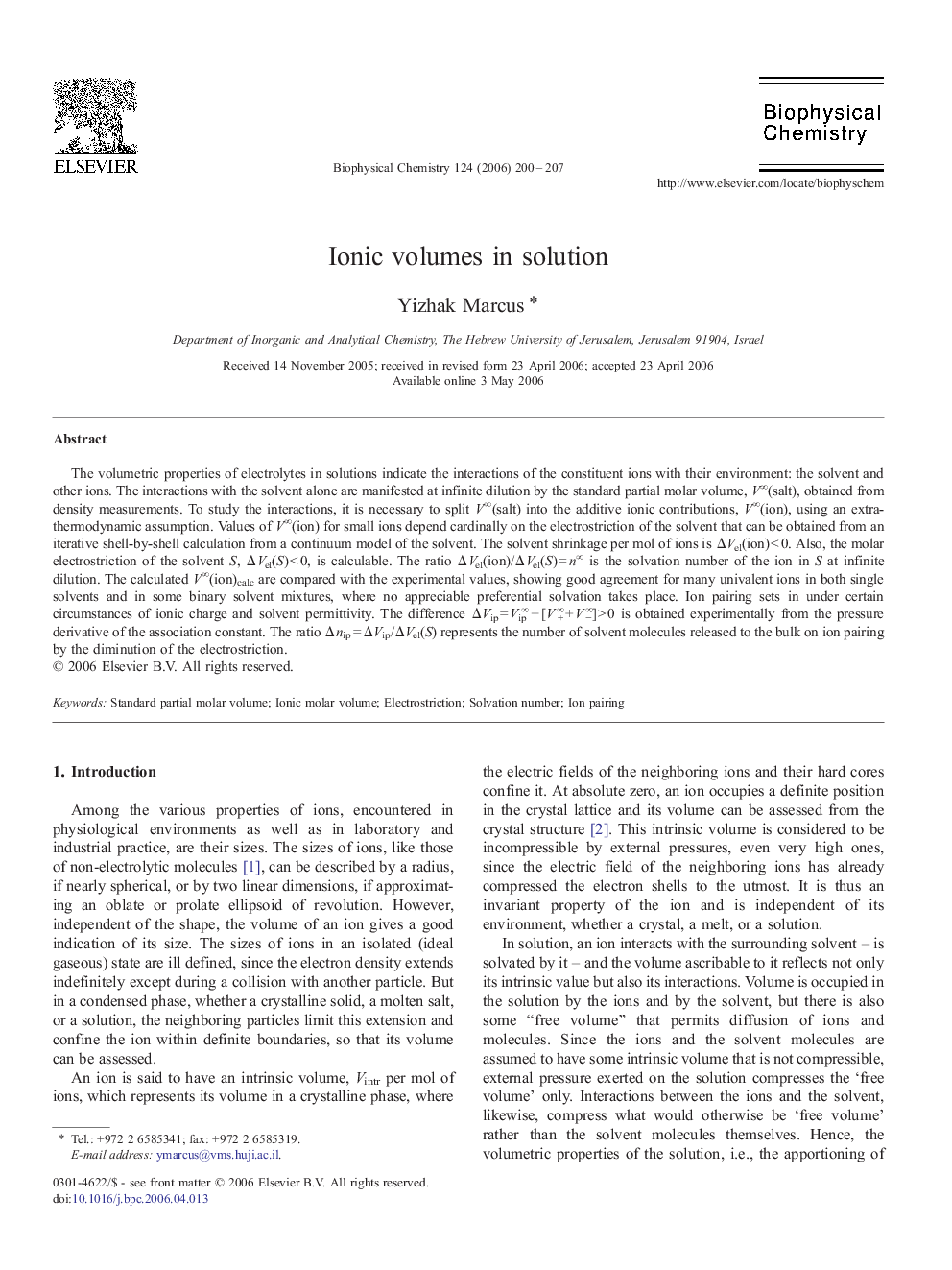| Article ID | Journal | Published Year | Pages | File Type |
|---|---|---|---|---|
| 5372183 | Biophysical Chemistry | 2006 | 8 Pages |
The volumetric properties of electrolytes in solutions indicate the interactions of the constituent ions with their environment: the solvent and other ions. The interactions with the solvent alone are manifested at infinite dilution by the standard partial molar volume, Vâ(salt), obtained from density measurements. To study the interactions, it is necessary to split Vâ(salt) into the additive ionic contributions, Vâ(ion), using an extra-thermodynamic assumption. Values of Vâ(ion) for small ions depend cardinally on the electrostriction of the solvent that can be obtained from an iterative shell-by-shell calculation from a continuum model of the solvent. The solvent shrinkage per mol of ions is ÎVel(ion) < 0. Also, the molar electrostriction of the solvent S, ÎVel(S) < 0, is calculable. The ratio ÎVel(ion)/ÎVel(S) = nâ is the solvation number of the ion in S at infinite dilution. The calculated Vâ(ion)calc are compared with the experimental values, showing good agreement for many univalent ions in both single solvents and in some binary solvent mixtures, where no appreciable preferential solvation takes place. Ion pairing sets in under certain circumstances of ionic charge and solvent permittivity. The difference ÎVip = Vipâ â [Vâ+ + Vââ] > 0 is obtained experimentally from the pressure derivative of the association constant. The ratio Înip = ÎVip/ÎVel(S) represents the number of solvent molecules released to the bulk on ion pairing by the diminution of the electrostriction.
